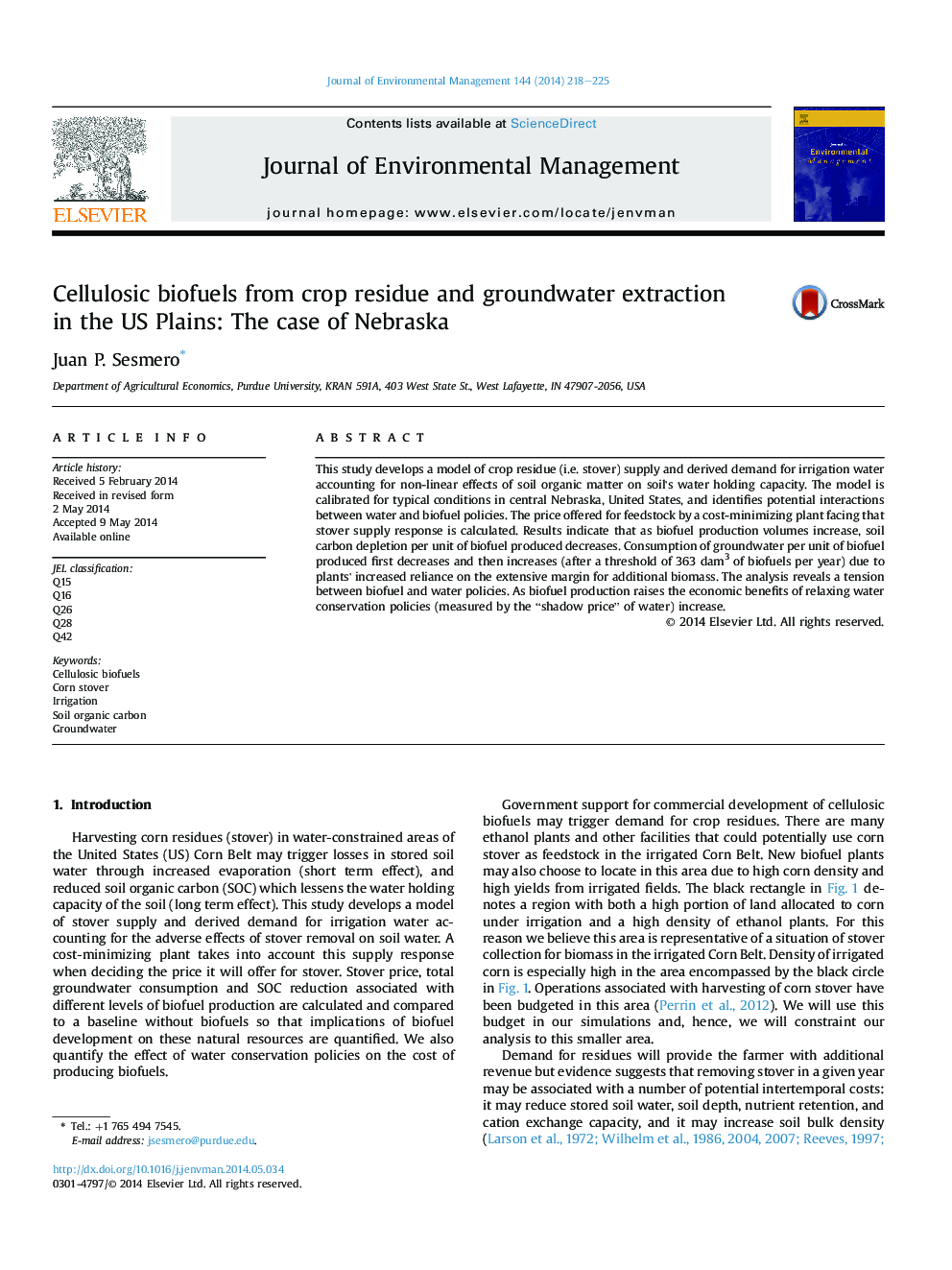| Article ID | Journal | Published Year | Pages | File Type |
|---|---|---|---|---|
| 7483681 | Journal of Environmental Management | 2014 | 8 Pages |
Abstract
This study develops a model of crop residue (i.e. stover) supply and derived demand for irrigation water accounting for non-linear effects of soil organic matter on soil's water holding capacity. The model is calibrated for typical conditions in central Nebraska, United States, and identifies potential interactions between water and biofuel policies. The price offered for feedstock by a cost-minimizing plant facing that stover supply response is calculated. Results indicate that as biofuel production volumes increase, soil carbon depletion per unit of biofuel produced decreases. Consumption of groundwater per unit of biofuel produced first decreases and then increases (after a threshold of 363Â dam3 of biofuels per year) due to plants' increased reliance on the extensive margin for additional biomass. The analysis reveals a tension between biofuel and water policies. As biofuel production raises the economic benefits of relaxing water conservation policies (measured by the “shadow price” of water) increase.
Related Topics
Physical Sciences and Engineering
Energy
Renewable Energy, Sustainability and the Environment
Authors
Juan P. Sesmero,
